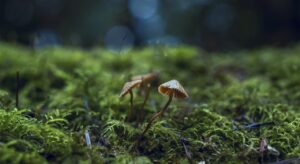Our planet is home to a huge number of different plant species (both studied and unknown) located on the 7 continents of the world. The Earth was not always divided into seven continents, until 175 million years ago all the continents were united into one supercontinent surrounded by a very large ocean. This supercontinent was known as Pangaea. It slowly began to divide into 7 different parts and occupy the positions we know now. But continents are not at rest, they are always moving and will move over time and over the next few hundred million years form entirely new continents. The spread of flora across continents is the result of a long process of plant evolution.
Australia
The flora of Australia is characterized by the presence of a large number of endemic species – plants not found anywhere else. Nevertheless, with the arrival of immigrants, many other “non-native” species have taken root on the continent. The Australian vegetation is dominated by two types of plants, the eucalyptus and the acacia.
Asia
Asia has the greatest diversity of plant life of all the parts of the world, as it occupies the largest area, located in different climatic zones and natural zones. More than 100 thousand plant species can be found here, from tropical to arctic, which is about 40% of the flora of the Earth. The continent also has a large number of endemic plants.
Antarctica
Antarctica is the most inhospitable place on Earth for both animals and plants. There are no trees, but only two species of flowering plants and many mosses, lichens, algae, etc. are present. The ecosystem of the continent is very fragile and suffers because of climate change and human activities.
Africa
Africa is the second largest continent in the world and is home to many unique plants. The flora of the continent is distributed in three main biomes – grasslands, deserts, and forests. However, desert plants do not have a wide range of species diversity because this biome is characterized by difficult climatic conditions, including high temperatures and droughts. The Sahara Desert, located in northern Africa, is one of the driest places on Earth. Nevertheless, Africa’s humid evergreen tropical forests, contain a great diversity of plants.
Europe
Although Europe is on the same continent as Asia, called Eurasia, it does not have as rich a species diversity of plant life as its eastern neighbor. The flora of Europe has been largely influenced by the mountain range of the Alps, which extends from west to east.
North America
North America is home to the planet’s major biomes, from deserts to arctic tundra. Each biome is characterized by a collection of specific plant species that have adapted to grow in particular environmental conditions.
South America
South America, like Asia, is home to a great diversity of plant species. It is home to the Amazon basin, a huge ecosystem that supports a multitude of animal and plant life.


